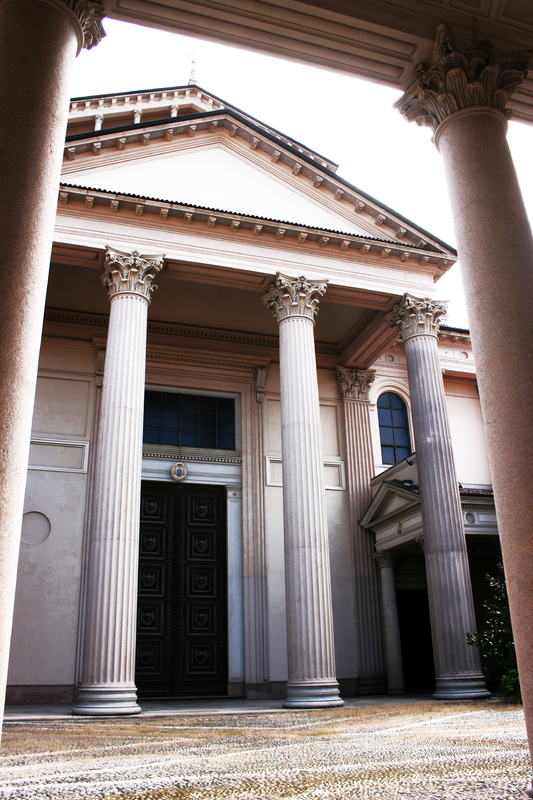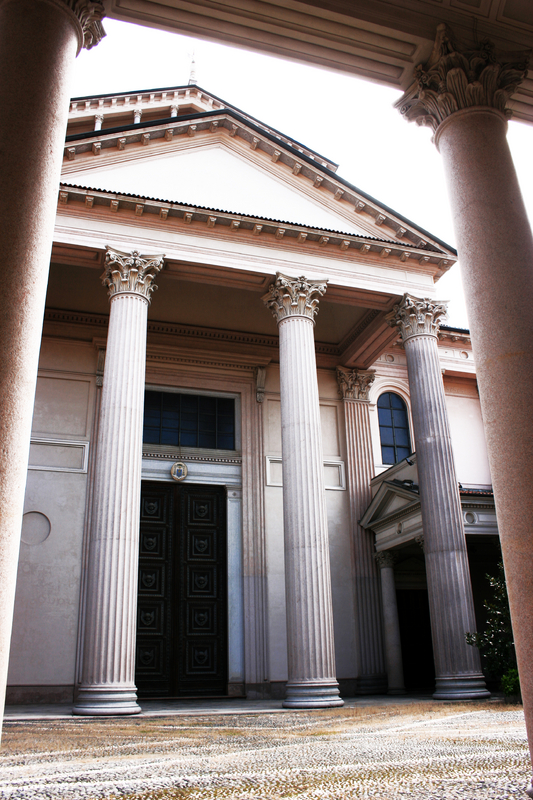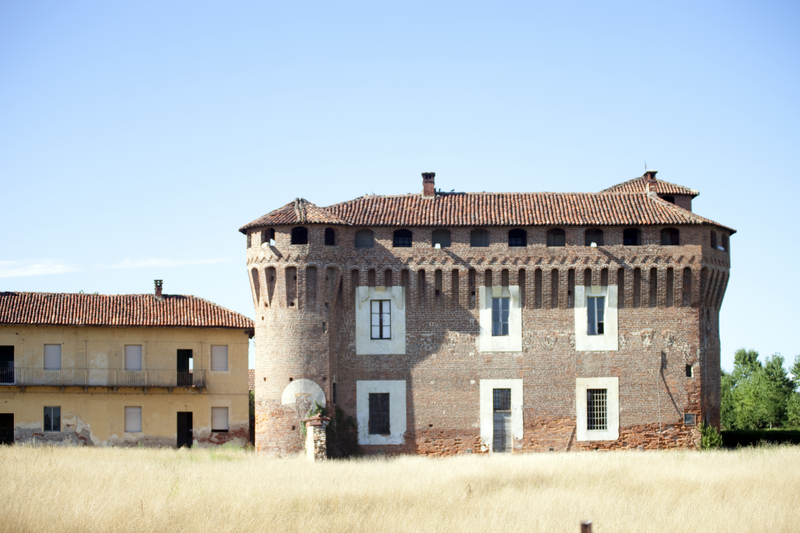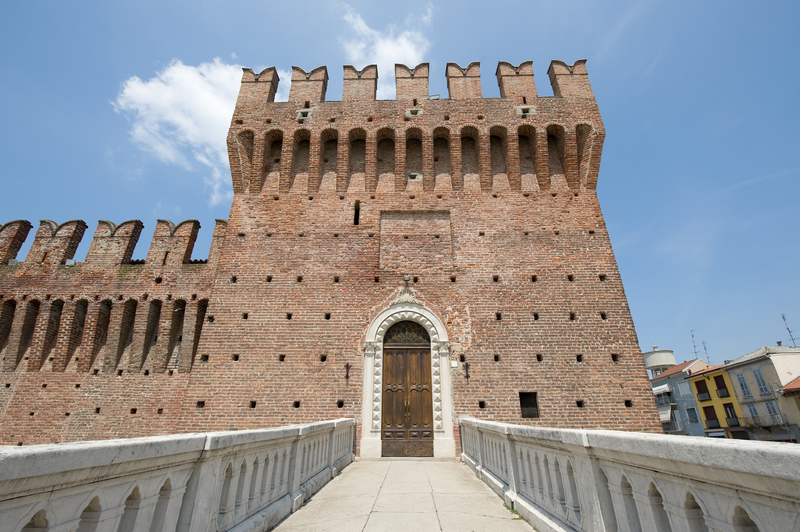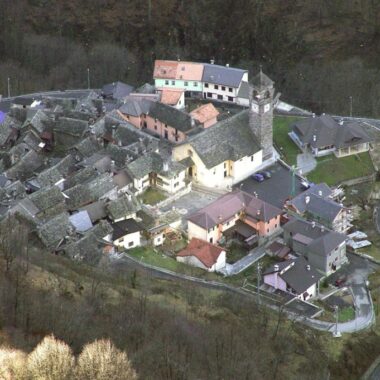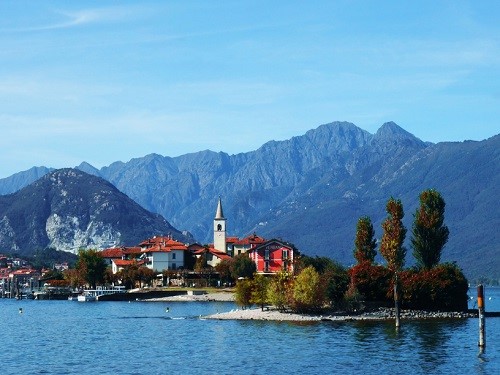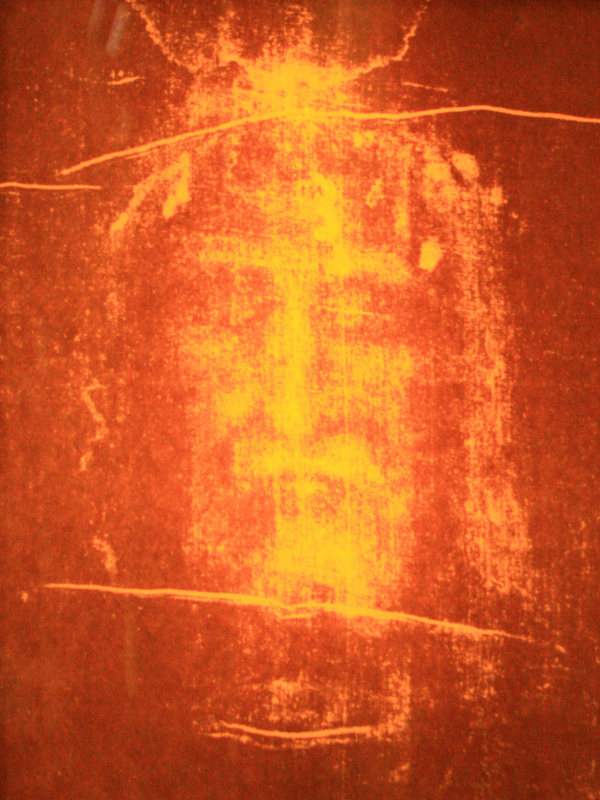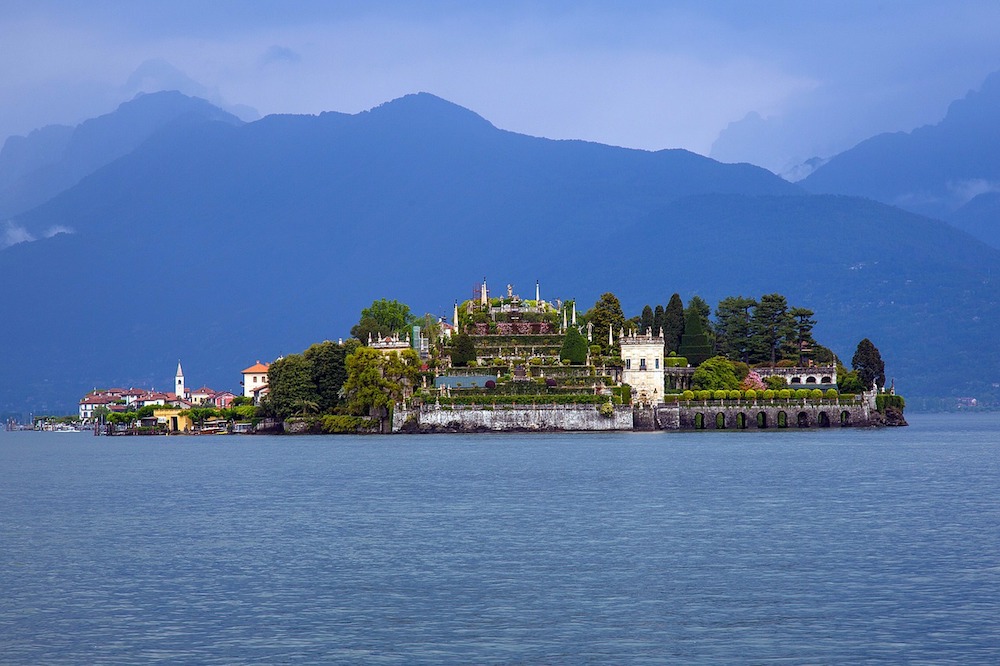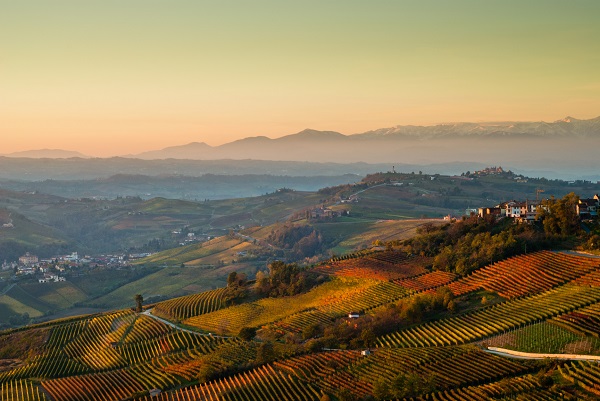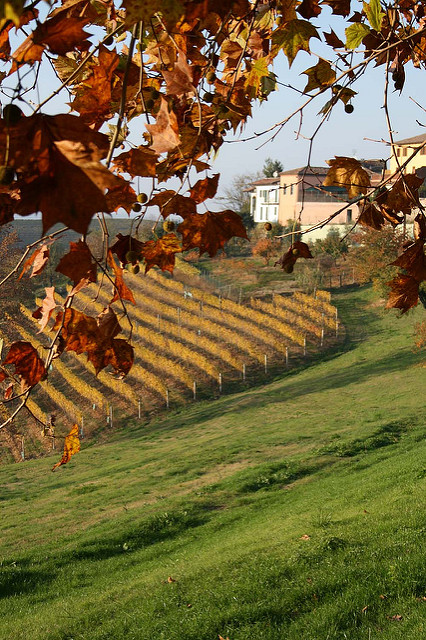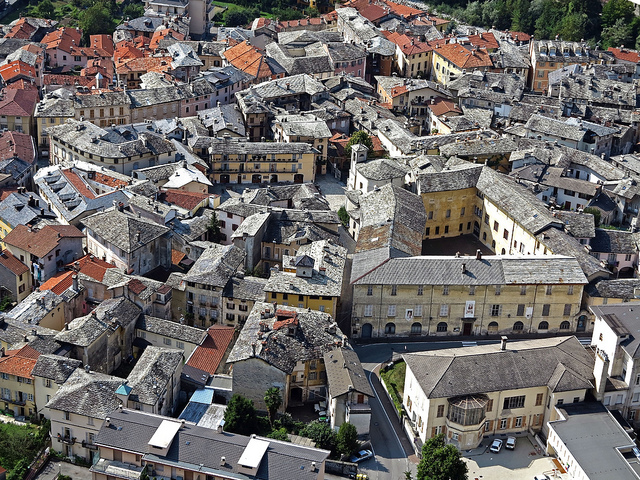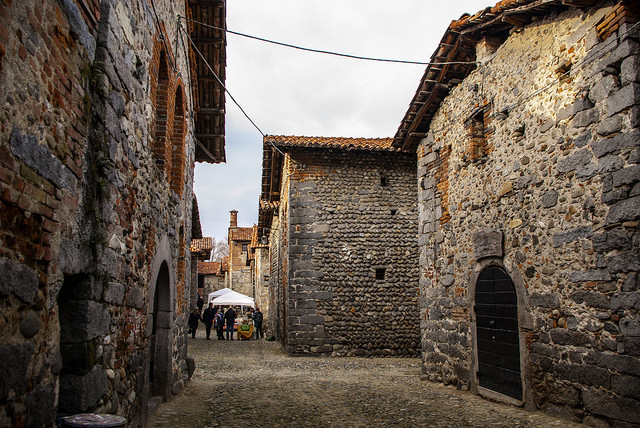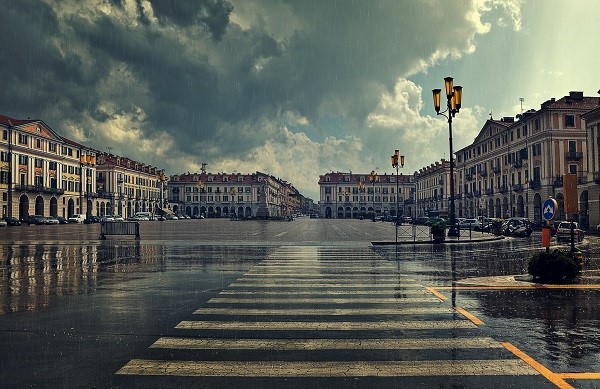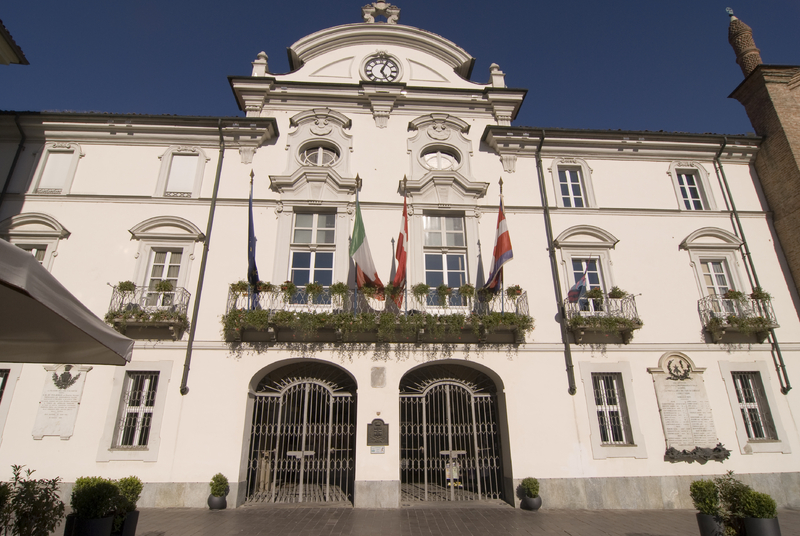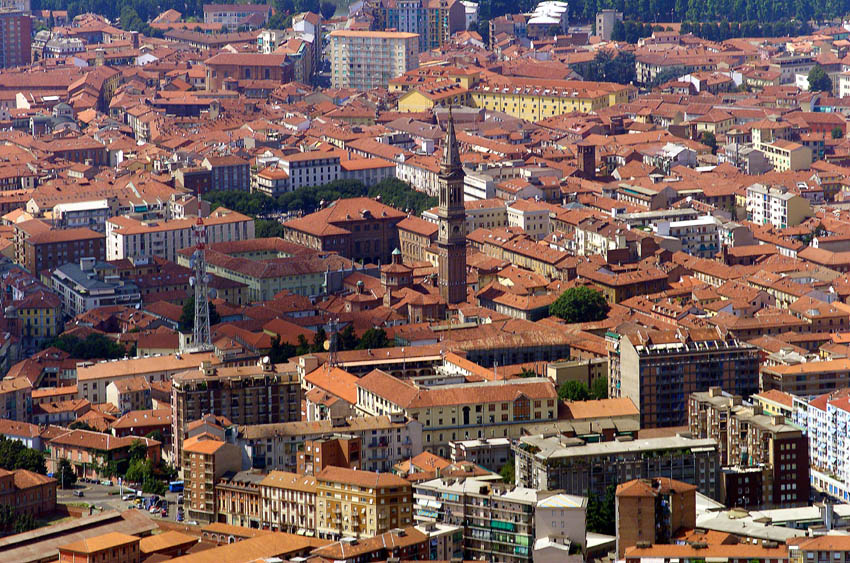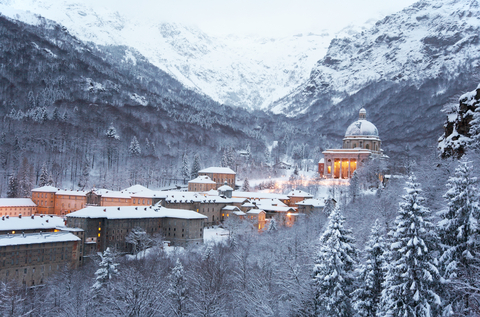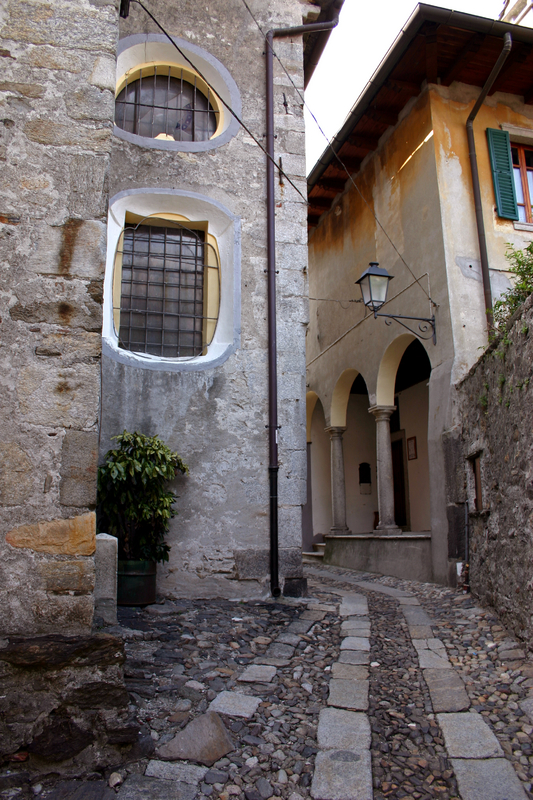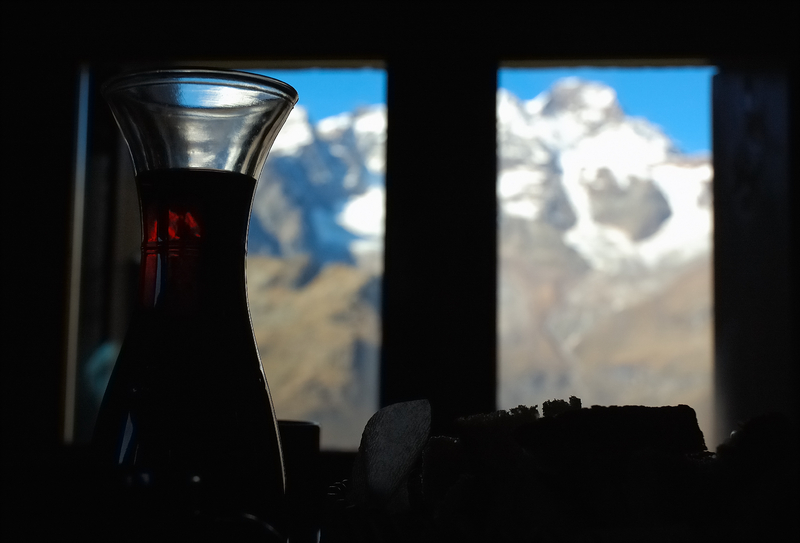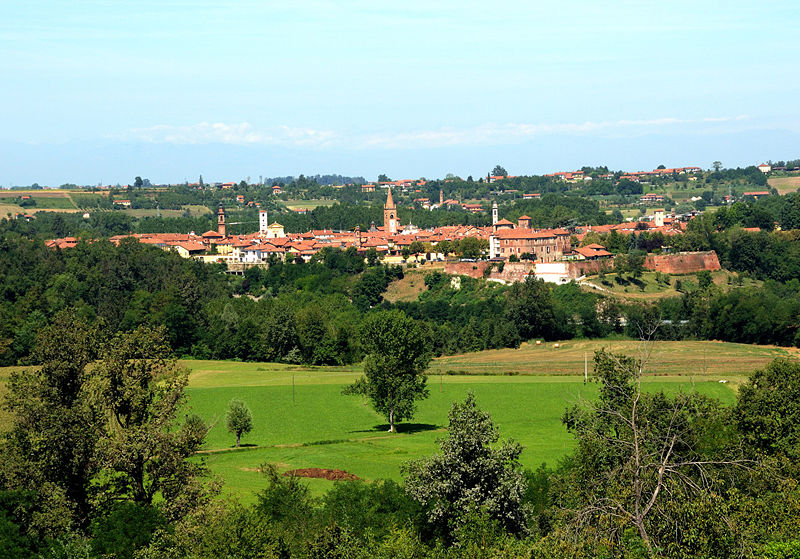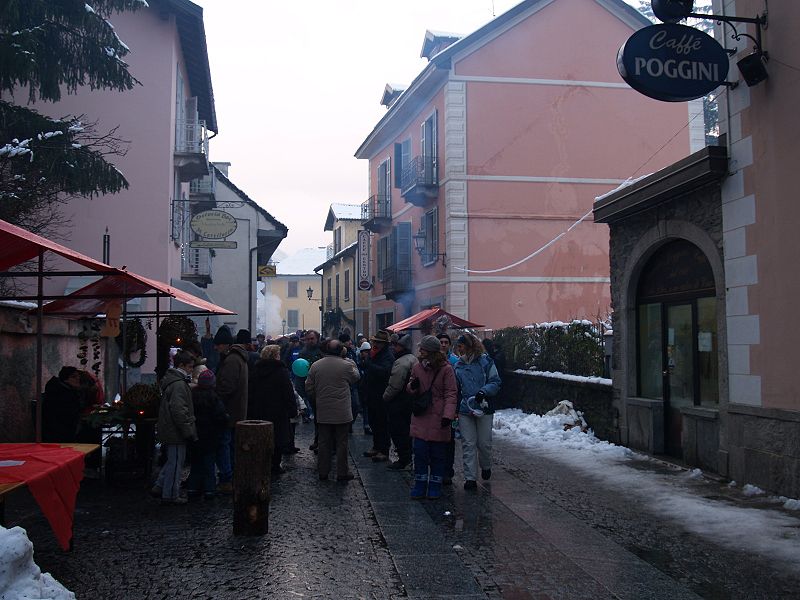Novara is the capital city of the province of Novara. It is located in the Piedmont region in northwest Italy. It population density of a little over 100,000 makes it the second most populous city in Piedmont after Turin and the second largest urban area of the Piedmont region with 190,000 inhabitants. It is a central crossroad for commercial traffic among the routes from Milan to Turin and from Genoa to Switzerland. Novara lies between the Agogna and Terdoppio Rivers in northeastern Piedmont some 38 km from Milan and 95 km from Turin.
Anyone with some romance language background can probably decipher a little of the meaning of the name “Novara”. It is formed from “Nov”, meaning “new”, and “Aria”, which is the name used for the surrounding region. It is situated on perpendicular roads typical of the way the ancient Romans laid out their cities.
After Napoleon came through here, Novara became the capital of the Department of the Agogna, but was then put into the House of Savoy in 1814. In 1821, it was the site of the battle between Sardinian and Piedmontese troops, of which the Sardinians were victorious. The Battle of Novara in 1849, the Sardinian army was defeated by the Austrian army. This defeat is seen by some as the beginning of the Italian unification movement.
An 1859 decree created the province of Novara, which then include the present day provinces of Vercelli, Biella and Verbano-Cusio-Ossola.
At the time of unification in 1861, Novara had a population of about 25,000. 20th century industrialization increased the city’s population to a little over 100,000 at present day.
As with many cities in Italy, there are two areas to see the main sights within the city. Most larger cities were encompassed by city walls at some point. After the walls were knocked down, the city grew out. Therefore, the areas within the old city walls and outside its ancient boundaries usually house two distinct pockets of history and architecture.
Novara is no exception to this phenomenon. The old city center makes up the “historic” center. As per the norm, Novara once had an encircling wall, which was demolished to allow for the city to grow. Of the old wall their remains only the Barriera Albertina, a complex of two buildings that constituted the gate of entry to the city. This was the required passageway for those who traveled from Turin to Milan. After the walls came down, the present day baluardi took its place. The baluardi is the tree lined boulevards that surround the historic center of town.
The cupola of the Basilica of San Gaudenzio is the symbol of the town. It stands at 121 meters. Together with the bell tower, it makes the entire Basilica a key figure since the time of its construction in 1888.
The Cathedral is the spiritual heart of Novara. Designed by Alessandro Antonelli, it sits exactly where the temple of Jupiter stood in the times of the Romans. The early Christian Baptistery, the oldest building in Novara, faces the Cathedral.
Also in close proximity to these complexes is the courtyard of the Broletto. The Broletto is the historic meeting place of the city council, the center of the political life of the city.
The Palazzo del Podesta and the Palazzetto dei Paratici both look over the Broletto courtyard. The buildings house the Civic Museum and the Gallery of Modern Art, and the Palace of the City Council.
The Piazza Cesare Battisti marks the exact center of the city. To the townspeople it is known as the Piazza delle Erbe, or “Herbs square”.
The Palazzo Natta-Isola, seat of the province and of the prefecture of Novara, sits in Piazza Giacomo Matteotti. The signature piece of this structure is its clock tower. Along the connecting Via Fratelli Roselli is the Palazzo Cabrino, the official seat of the administrative offices of the city. In ancient Roman planning, a cardo was a set of north-south oriented streets in cities and military camps. It served as the economic center and was lined with shops, merchants and vendors. Such it was in Novara, as well. Today that cardo corresponds directly to the present day Corso Italia and Corso Cavour.
Statues to Victor Emmanuele II are found in many places in Italy and also in Novara. The equestrian statue of Victor Emmanuele II is found here in the city’s largest square, Piazza Martiri della Liberta. The Castello Visconteo-Sforzesco, built by dukes Visconti and Sforza, and the Teatro Coccia, oversee the Piazza Martiri. The Castello is surrounded by one of the largest public gardens in Novara, the Allea.
Other piazzas of note are the Largo Cavour, dominated by the statue of the same name; Piazza Garibaldi, the square facing the railway station, featuring the statue of the hero; Piazza Gramsci, which hosts the statue of Icarus.
This is all within the old city center. Outside the old historic center include the Chiesa del Sacro Cuore, the Church of San Nazzaro della Costa and the Ossuary of Bicocca. The Ossuary is in memory of the fallen soldiers of the historic battle between the Piedmontese and Austrians in 1849. Also, worthy of seeing is the Church of Santa Maria delle Grazie, which was built in 1477, and whose interior consists of a single nave with lateral chapels and paintings attributed to artists of the 15th century.
Novara has its share of festivals throughout the year, as well. January 22 marks the feast of San Gaudenzio, its patron saint. You may visit the saint’s tomb as well as indulge in the marroni di Cuneo, or roasted chestnuts. Liberation Day, April 25, is celebrated here and other spots around the country, to celebrate the resistance movement and the local partisans who took part in resistance activities.
The turn of the new century has spawned two new festivals, Giovani Espressioni and the Novara Gospel Festival. The Giovani Espressioni is a music festival aimed at emerging, young musicians. There is a contest held each year, as well, as a way of focusing in on new bands. The Gospel Festival is composed of workshops, local tours, and gospel concerts in the main theatre of the city.
Because of its proximity to Milan some firms based in Milan have offices in Novara. In addition, rice, corn, metallurgy, pharmaceuticals, banking and insurance make up the economy here.
So, if you are looking to enjoy una festa, a walk through the ancient ruins, or take in some music, Novara is the place to be.
